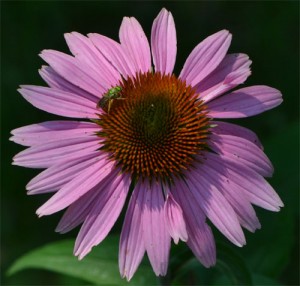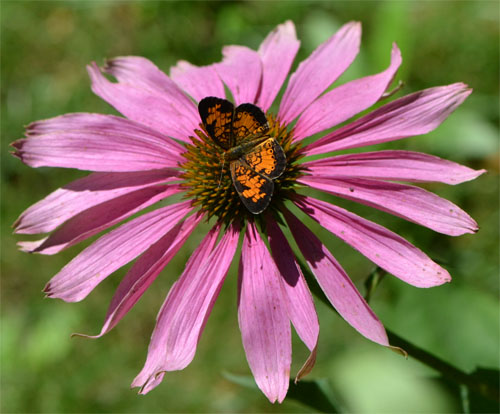 I’ve known about Echinacea, the herbal supplement, since childhood. In Europe it’s been an essential ingredient of several cold and flu medications. Most of the research on the uses and benefits of this plant was done in Europe, Germany in particular. Although there remains some scepticism about the validity of the studies, researchers contest that Echinacea stimulates cells responsible for fighting all kinds of infection. Unlike antibiotics, which directly attack bacteria, Echinacea helps our own body attack bacteria, viruses and abnormal cells, including cancer cells. There are claims that Echinacea increases the number of immune system cells including anti-tumor cells, promotes T-cell activation, stimulates new tissue growth for wound healing and reduces inflammation in arthritis and inflammatory skin conditions. In the United States, we have relied much more heavily on antibiotics, and Echinacea is largely relegated to second tier shelves in pharmacies, although that has changed somewhat over the last few years.
I’ve known about Echinacea, the herbal supplement, since childhood. In Europe it’s been an essential ingredient of several cold and flu medications. Most of the research on the uses and benefits of this plant was done in Europe, Germany in particular. Although there remains some scepticism about the validity of the studies, researchers contest that Echinacea stimulates cells responsible for fighting all kinds of infection. Unlike antibiotics, which directly attack bacteria, Echinacea helps our own body attack bacteria, viruses and abnormal cells, including cancer cells. There are claims that Echinacea increases the number of immune system cells including anti-tumor cells, promotes T-cell activation, stimulates new tissue growth for wound healing and reduces inflammation in arthritis and inflammatory skin conditions. In the United States, we have relied much more heavily on antibiotics, and Echinacea is largely relegated to second tier shelves in pharmacies, although that has changed somewhat over the last few years.

As for the actual plant, I had no idea that it was an native perennial inhabiting eastern North America. I have 3 or 4 of these plants in my woodland garden, in a spot where I get a fair amount of sun – they are finally getting established after a year or two of tentative growth. I believe more sun would have been better, and maybe I am watering them a bit much: They are supposed to be drought resistant, but on hot days the flower heads tend to droop.

Echinacea purpurea with visitors, Cummaquid July 17 2011
Insects, bumblebees and butterflies are attracted to them, and folks have told me that birds love the seed in winter. Rather than deadheading them as I usually do, I will try to leave the seed heads for the birds (unless, of course, it does not look good in this upfront and center area of my yard)
Leave a Reply